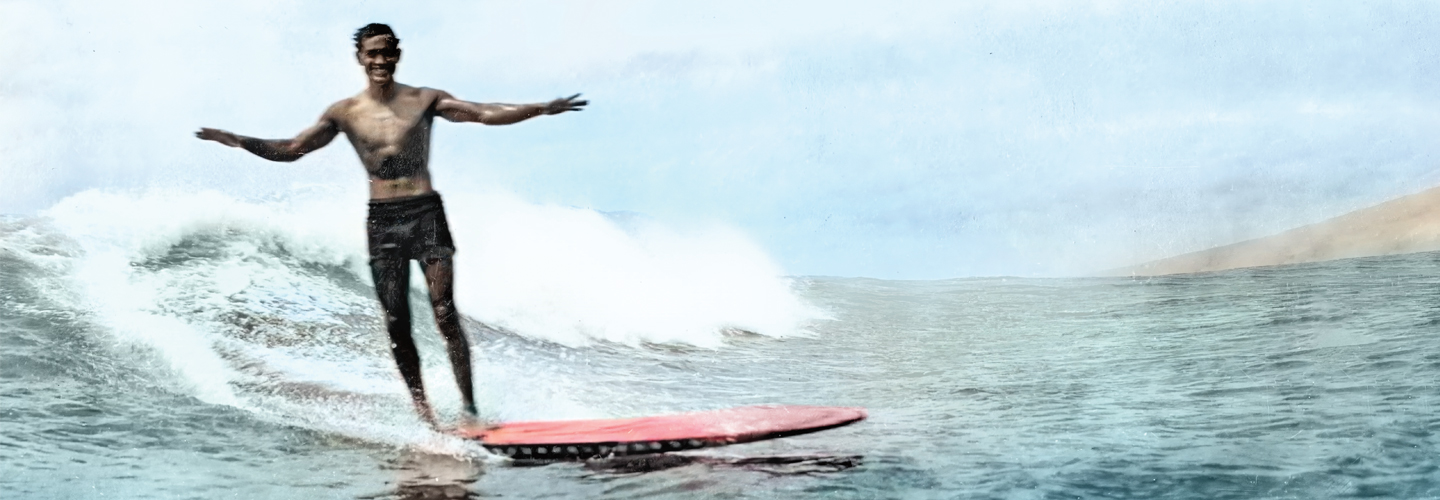Nobody in Australia had ever seen anything like it. One day in late December 1914, Duke Kahanamoku put his surfboard, freshly carved from a hunk of wood, into the water on a beach outside Sydney and paddled into the ocean. When he zoomed back into view, he was standing tall on top of the waves.
The people gathered on shore to watch Kahanamoku (kah-hah-nah-MOH-ku) were in awe. “So lightning like was the movement that all one could see was [a figure] flying through space,” a reporter wrote.
And he was just getting started. Kahanamoku gave the crowd a show. He rode wave after wave, facing forward, backward—and even standing on his head!
It was a wow moment. There were a few surfers in Australia at the time, but none who were capable of such feats.
Nobody in Australia had ever seen anything like it. One day in late December 1914, Duke Kahanamoku grabbed his surfboard. It was freshly carved from a hunk of wood. He put it into the water on a beach outside Sydney and paddled into the ocean. When he zoomed back into view, he was standing tall on top of the waves.
People had gathered on shore to watch Kahanamoku (kah-hah-nah-MOH-ku). They were in awe. “So lightning like was the movement that all one could see was [a figure] flying through space,” a reporter wrote.
And he was just getting started. Kahanamoku gave the crowd a show. He rode wave after wave. He faced forward, backward, and even stood on his head!
It was a wow moment. There were a few surfers in Australia at the time. But none were able to do such feats.

